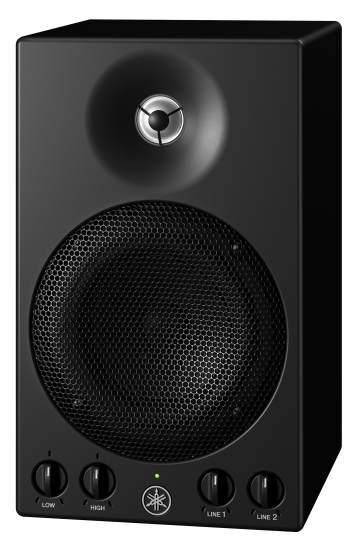Yamaha Launches MSP3A Compact Powered Reference Monitors With Twisted Flare Port Technology

Yamaha has announced a new addition to its professional loudspeaker range, the MSP3A powered monitor, building on the faithful sound reproduction and convenience of the much-loved MSP3.
Yamaha’s MSP3 has long been a fixture of many different applications, thanks to its great audio quality, compact size and convenient, front-mounted controls. The MSP3A builds on this legacy by adding key new features, including Yamaha’s Twisted Flare Port technology, which delivers an even clearer and tighter low-end, with faithful reproduction across the entire audio spectrum.
The built-in 22W power amplifier is optimized for the speaker unit, which comprises a 10cm (4” ) woofer and a 2.2cm (0.8”) tweeter, for a clear and natural reference sound. The compact 23.6 x 16.7 x 14.4cm (9.3 x 6.6 x 5.7”) cabinet weighs a mere 3.6kg (7.9lb), making it easy to reposition and move to different locations.
Like its predecessor, the MSP3A has multiple (RCA, XLR and 6.3mm) input connectors, level and low/high tone controls. It is compatible with a variety of optional brackets, making it suitable for a wide range of uses. These include audio monitoring in settings from studios, broadcast, post-production suites and other commercial applications, to monitoring audio from digital musical instruments and computers.

A reinforced metal grille ensures that the woofer enjoys maximum protection, which is especially useful for mobile and touring applications.
Included in the MSP3A for the first time in this loudspeaker series, Twisted Flare Port technology is a form of aerodynamic sound control, borne of Yamaha’s extensive subwoofer development experience. Applying aerodynamic sound analysis and flow visualization measurement technologies to pinpoint and control noise generation mechanisms, noise-generating turbulence at both ends of the port is suppressed by changing how the port widens from input to output and twisting the airflow. Suppressing turbulence reduces muddiness in the sound and lowers the amount of noise generated at the port ends. This strengthens the connection between the sound and main speaker, delivering clear, tight low frequencies along with improved pitch and rhythm.
 How to resolve AdBlock issue?
How to resolve AdBlock issue?